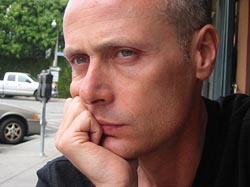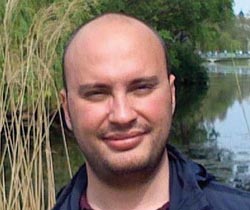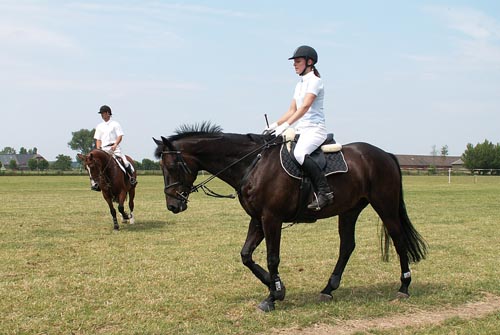Premise
In a recent book of the fantastic-detective
genre, published by Einaudi and entitled "Nane oca rivelato" by
Giuliano Scabia, the protagonist asks Homer what is poetry. The answer is:
"It is when words become horses". We feel free to hope that Scabia meant
that the river of words and concepts that we produce daily (and that
modern information and communication technology then enhances and
transmits far away) are so much more poetic, and we feel this way a sense
of relief and comfort for the bodies and the souls of those who will
listen, as much as they are able to evoke the strength of a horse or the
agility of a dog, the freshness of the shadow of a tree or the perfume of
the sea waves. We like to be convinced by Scabia that reality is hidden,
submerged, always, a fabulous essence in which a word trots like a horse
and where horses speak to us with sorrow. Now, one of the issues relating
to the current hyper-technologized society is whether modern
technologies contribute, in the end, to widening a gap between the
reality as it is perceived from the senses and the fabulous schemes that
it hides. If I speak on the mobile phone with my partner, surely I stay in
touch with her even when I am far away but maybe I am losing the
possibility of an adventure in the strawberry garden of her lips. And so
the question is: are modern technologies, designed to make the world that
we see more manageable and efficient, getting us further away from its
hidden and adventurous side, no less real?
We wrote the brief note that
follows to tell the magazine's readers about an annecdote concerning
the fact that not everything that is technological crystallizes the
reality only in what we see, feel or touch, but there exist technologies
that bring up on the surface those fabulous schemes of which it is made.
We wrote it specifically for this magazine because we know that whoever
reads it is used to seeing things differently, to feeling silence, to
moving in stillness. We hope to be convincing, we hope to be useful.
Background
Since we began by speaking about horses,
let us go back to the subject to demonstrate that what is wilder and freer
in the animal world often speak to us, that there are technologies which
can help this dialog, this exchange. That household pets have regained in
the course of centuries, and continue to do so, an important role in the
life of many people is a known fact. Aside from the classic duties as
guardian and company, studies of psychological characters have recently
drawn attention on how the interaction with animals can improve the social
abilities of some people.
Medical studies, moreover, have shown how a
relationship with them can even influence positively various physiological
values such as blood pressure and cardiac frequency.
For example, the
use of horses as having an effect on human therapeutic pathologies was
sensationally demonstrated during the 1952 Olympics in Helsinki when
Danish athlete Lis Hartel, paralyzed in the legs following polio, won a
silver medal in the dressage category. This experience inspired
physicians and therapists who could see the potential in the use of horses
in motor and psychological recovery of persons with disabilities. Today,
in the US, the North American Riding for Handicapped Association has
30,000 special riders who are being helped by their relationship
with horses. The potential in the relationship between horses and special
riders has been exploited also in Italy, where for many years this
subject is at the centre of the interest of various charitable
organizations, public and private. In particular, we were very
impressed
by the activities of a special unit of the Horse Regiment of Lancers of Montebello, commanded by Col. Gianfranco Fedele who for many years has made horses and instructors available to special riders. Recent results achieved by Lancieri and easily verifiable concern a young autistic girl who learned to communicate and entered University, and of a student who became part of the sports group for disabled people and won Italian championships.
Fact
If the subject is now about wild
horses for special riders, technologists are asking themselves what could
be done to improve this relationship. While it is true that for a while
now sensory hardware has been an integral part of the equipment used
for therapeutic purposes in the various phases of identification,
monitoring and rehabilitation in psychological and physical pathologies in
hospitals, the most recent evolution in algorithm software and wireless
technological apparatus can make possible today the identification
and quantification in real time, and outside of the health facility, of an
anomalous condition, the probability of reporting in an immediate future a
dangerous situation for the health of a person. So, the idea is that the
possibility to see ahead of time possible problems and report them at a
distance in real time can bring on significant improvements to complex
treatments like hippotherapy during which the typical operations of
monitoring, measuring and controling are done in complicated geographical
contexts and outside of a health facility.
For that purpose, the
Department of Information Science of the University of Bologna is
undertaking a collaboration with the Horse Regiment of Lancers of
Montebello based on the idea to improve the application of the
hippotherapy practice intercepting data on posture and stability while
riding and data on psychophysiological conditions (ex., stress) in order
to allow a corrective intervention or assistance when necessary. Simply
said, the goal is to obtain a process of hippotherapeutic optimization,
able to take advantage at best the mathematic-postural models with
relative algorithms and wireless sensors in order to gather and retransmit
at a distance the first signals that demonstrate possible conditions of
discomfort of the rider. This requires the implementation of techniques
that allow the correlation of a large amount of information read by
sensors like the level of anxiety or stress and the rider's eventual
incorrect posture. The idea of the way the system can be implemented is
shown in figure 1. One or more sensors can be installed on the
rider's clothes and/or on the horse in order to transmit without
wires information to a medical control centre.
The technician at the medical control centre (who does not
have to be near the training field, but in a health facility) could in
turn warn an instructor on the field to execute a corrective intervention.
Just as an example, it is reported that blood pressure, which level is
known to be influenced by a persistent state of stress could be considered
an indicator of interest, but it is clear that parameters of interest and
methods of reporting should be rigorously chosen according to the type of
rider and his or her pathology, in agreement with the medical team.
Generically speaking, it could be possible to imagine integrating in the
system the use of sensors such as the cardiofrequencemeter, the blood
pressure meter, the electric brain activity meter, etc. To record the data
necessary for the system to calculate the possible abnormalities in the
posture of the rider, we could think of using an accelerometer (which
gives measures of acceleration) placed in adequate positions.
In
conclusion, we state that the connection between the natural or animal
world and technology represents advantages for mankind. The contact with
an animal, the horse, which is known to be a symbol of freedom and wild
spaces, requires however the use of technologies allowing this freedom and
not interfering with these spaces, overcoming where possible the
obligation of being confined in a clinical environment, even if one is
submitted to therapeutic procedures however complex. After what we have
told you, we ask you, readers, a question: are you still disposed to
believe that all modern technologies, with the objective of resolving
problems of efficiency, are truly and always instruments that take us away
from the fabulous beauty of the reality around us? If your answer is yes,
then: or we were not able to have our words galloping as fast as horses or
you are the ones who cannot see differently!
Marco Roccetti has been for ten years a computer science professor at the Department of Information Science at the University of Bologna,
Gustavo Marfia, after his recent Ph.D. at UCLA, collaborates with the Department of Information Science at the University of Bologna.



